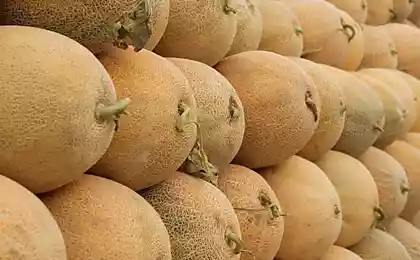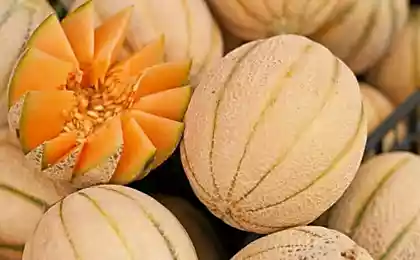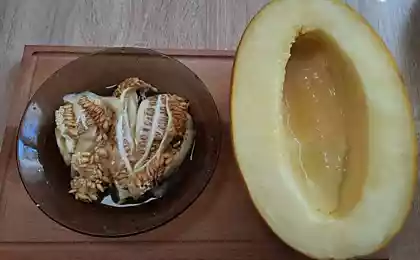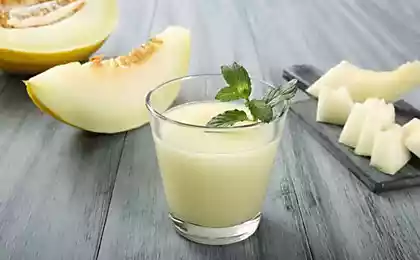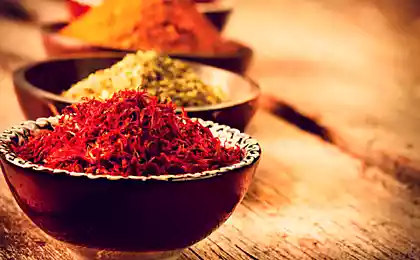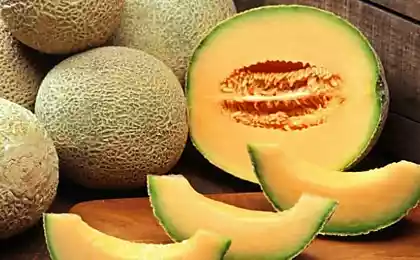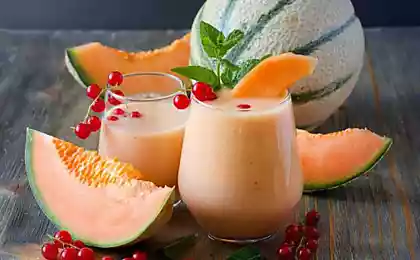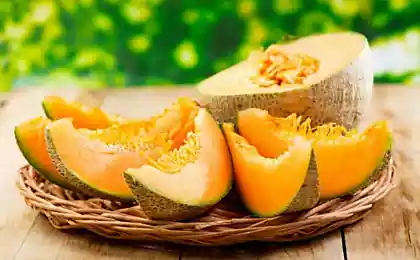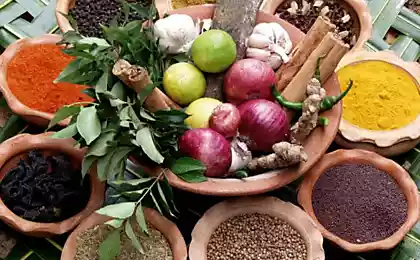181
How to choose a ripe melon
“Sweet as honey, smooth as a girl!” – these words from the popular Soviet film can be considered the most figurative and concise description of melon.

Sometimes, you bring from the market an oval fruit with cracked rough skin, cut with a knife, and immediately the room is filled with exciting fresh fragrance.
No wonder in the East melon endowed with special properties and considered the best means of rejuvenation. Locals say it makes eyes shiny, hair silky, desires strong, men hardy and women eternally young.

But often ripe-looking melon turns out to be green or simply not sweet. How to determine a good fruit? "Site" will help you always choose ripe, tasty and fragrant melons without nitrates.
How to choose a melon
Now that you know it. melonYou can easily choose the most delicious and healthy fruits on the market.
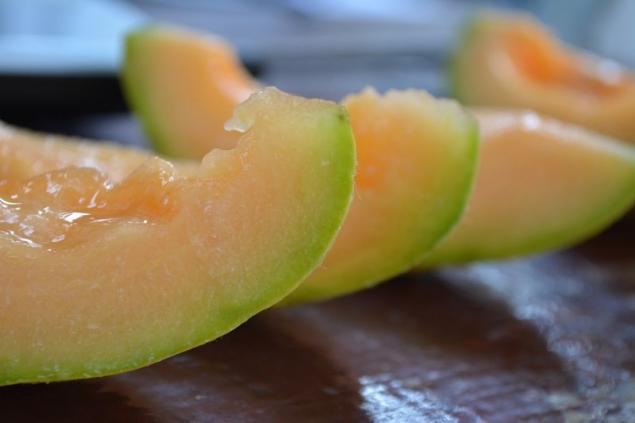
Any melon is considered a low-calorie and very useful food product, but be careful: in combination with a number of products, southern beauty can cause extremely unpleasant symptoms and consequences - disorder, increased gas formation, discomfort in the stomach.
Nutritionists recommend eating melon separately from other products. Do not drink milk, fermented milk drinks, water or alkacha after it, and the interval between meals should be at least two hours.
It is not always possible to buy ripe and fragrant miracle melon, sometimes there is an immature one. In this case, you should not throw it away, but rather prepare melon jam - an exquisite dessert that will please you with harsh winter days.
Watermelon is the most long-awaited and beloved attribute of summer. Choosing it sometimes seems very difficult, but we will share with you the secret of how to choose the most ripe and tasty fruits, without trying to taste their juicy flesh.
When we eat watermelons, we are very disturbed by seeds: we clean them with a knife and spit them out, and then throw them in the trash along with the crusts. That's a big mistake! Dried or toasted, watermelon seeds enrich our body with valuable trace elements and help to cope with many diseases.

Sometimes, you bring from the market an oval fruit with cracked rough skin, cut with a knife, and immediately the room is filled with exciting fresh fragrance.
No wonder in the East melon endowed with special properties and considered the best means of rejuvenation. Locals say it makes eyes shiny, hair silky, desires strong, men hardy and women eternally young.

But often ripe-looking melon turns out to be green or simply not sweet. How to determine a good fruit? "Site" will help you always choose ripe, tasty and fragrant melons without nitrates.
How to choose a melon
- Appearance
Melon should be free of black spots, deep cracks and dents. It is better not to take already cut melons, as this can lead to deterioration of health.
It is advisable to choose melons of medium size. Small ones are more likely to be green, and too large ones may have been fed growth stimulants.
If we talk about the melons of the most common "torpedo" variety, then their skin should be light yellow. Greenish can be immature, and too bright - contain an increased amount of nitrates.
At home, you can recognize a melon that is dangerous for use after its incision and examination. Nitrate-filled melons have the color of the pulp near the ponytail with which they were attached to the stem is different from the rest, and this should alert you.
681468
If longitudinal veins or fruit seeds are visible in the pulp, they are empty, have a grayish color, then this can also be a sign of chemical processing of plants. - Peeling
On the surface of the ripe melon will be visible orange streaks. If they are green, the melon is not yet ripe. You can also scrape the skin of the melon with a nail, but this method is not always suitable.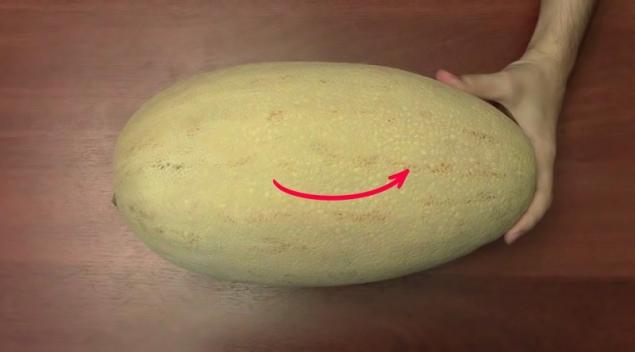
Ripe melon varieties "torpedo" has a delicate skin, which is easily scraped, opening a greenish inner layer. But in ripe melons of other varieties, the peel can be quite tough. Inside the ripe melon, you will find ripe seeds with strong husks. In unripe melon, the seeds will be soft. - The smell.
One of the most important signs of melon ripeness is its smell. The strong and sweet aroma of mature melon contains notes of pineapple and pear, the immature melon smells of cut grass.
Smell the melon at the tail and side. If you feel the same pleasant smell, buy it! - Sound.
Unlike watermelons, the ripeness of which is determined by a ringing sound, the ripe melon when tapping the sound should be deaf. If the sound is ringing, the fruit is likely green.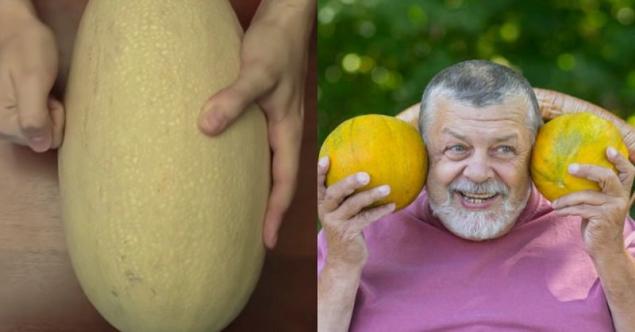
- Tail and nose
There is a myth that the larger the trace of a flower, or the nose of a melon, the sweeter it is. In fact, this is one of those cases where size doesn’t really matter.
But it's still worth touching. It should be soft and slightly springy. If the nose is too hard, the melon is unripe. If it is too soft and does not spring, then the melon is likely to have been stored for a long time or overripe.
You should also pay attention to the tail of the melon. It should be dry. If the tail is green and thick, the melon was cut too early.
Now that you know it. melonYou can easily choose the most delicious and healthy fruits on the market.

Any melon is considered a low-calorie and very useful food product, but be careful: in combination with a number of products, southern beauty can cause extremely unpleasant symptoms and consequences - disorder, increased gas formation, discomfort in the stomach.
Nutritionists recommend eating melon separately from other products. Do not drink milk, fermented milk drinks, water or alkacha after it, and the interval between meals should be at least two hours.
It is not always possible to buy ripe and fragrant miracle melon, sometimes there is an immature one. In this case, you should not throw it away, but rather prepare melon jam - an exquisite dessert that will please you with harsh winter days.
Watermelon is the most long-awaited and beloved attribute of summer. Choosing it sometimes seems very difficult, but we will share with you the secret of how to choose the most ripe and tasty fruits, without trying to taste their juicy flesh.
When we eat watermelons, we are very disturbed by seeds: we clean them with a knife and spit them out, and then throw them in the trash along with the crusts. That's a big mistake! Dried or toasted, watermelon seeds enrich our body with valuable trace elements and help to cope with many diseases.







